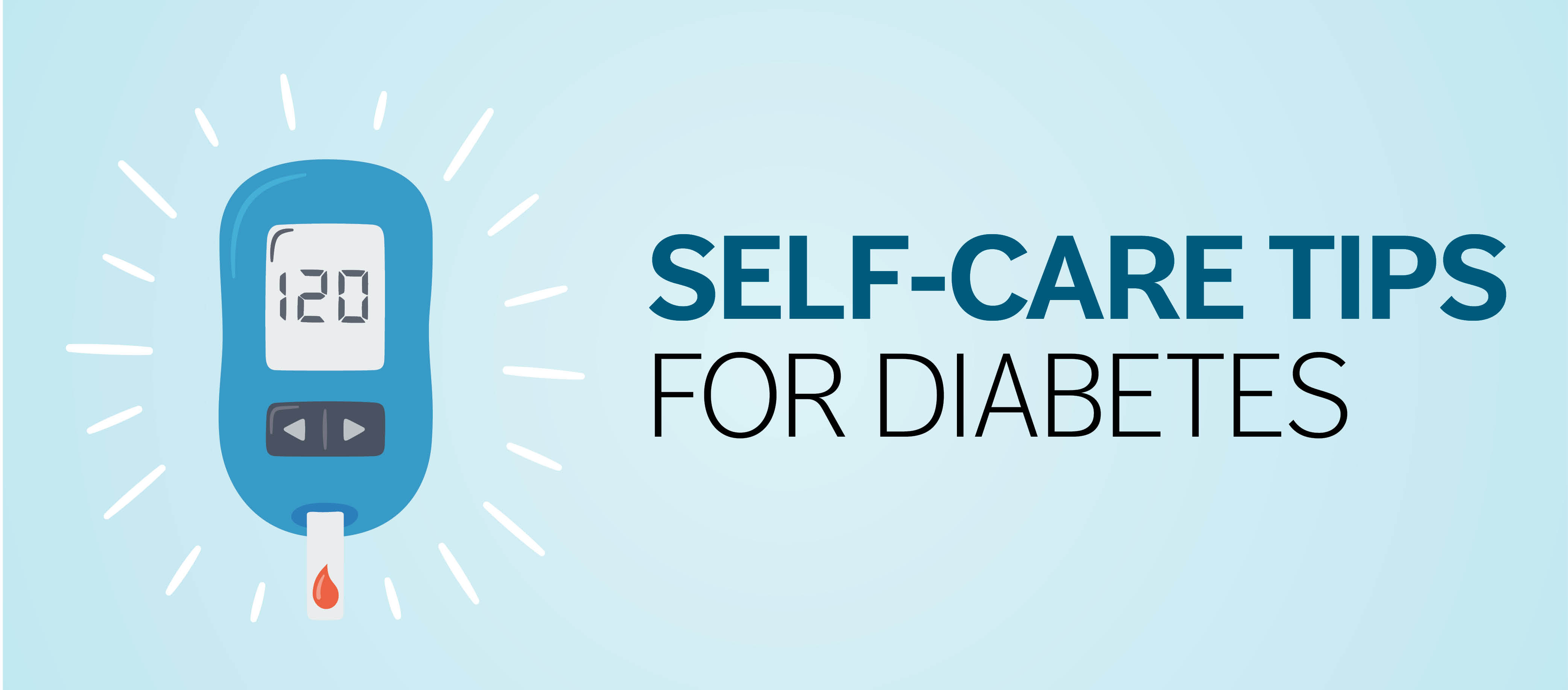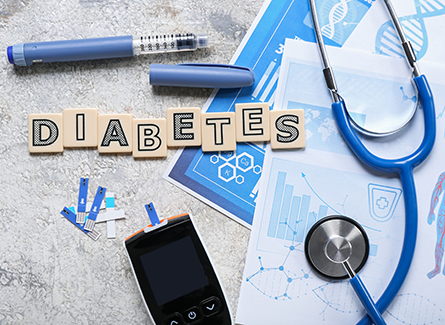Tools to Help Manage Diabetes
January 16, 2024By: Melissa Zalonis
Categories: Diabetes, Your Wellness

Living With Diabetes
Learn about the basics of diabetes, and get tips on how meal planning, exercise, proper medication and coping strategies can help you live well.
Diabetes is a chronic disease that occurs when your body doesn’t make or properly use insulin, which can result in high blood glucose, or blood sugar, levels. Insulin is a hormone the body needs to turn sugars and starches you eat into energy and regulate glucose levels. Having too much glucose in the blood stream can lead to health complications.
Managing diabetes and keeping blood glucose within a target range is key to preventing complications. One way to do this is by monitoring your blood glucose levels at home. While monitoring is not necessary for everyone, it can be a motivating tool to stay focused on your goals and maintain healthy habits. How often you check depends on the type of diabetes you have and your current medications.
Monitoring blood glucose provides information and data that will help you make powerful changes to improve your health. There are several reasons why your levels may be too high or too low, including:
- Medications
- Physical activity or lack thereof
- Stress
- Type and amount of sugar consumed
Monitoring your blood glucose also allows you to know if it is within your target range and share the data, good and bad, with your healthcare provider. This data will help you and your provider determine if your treatment plan is on the right track.
There are different apps, devices and tools available to monitor and track your blood sugar levels, and they can make a big difference in helping you manage your diabetes and achieve your goals.
Take Your Pick
There are two types of devices to check and monitor your blood sugar levels at home:
- Blood glucose monitor, or glucometer, which uses a drop of blood to check your blood sugar levels at that moment
- Continuous glucose monitor (CGM), which checks your blood sugar levels continuously day and night, significantly reducing the number of finger sticks that a person performs with just a glucometer. When using a CGM, for safety reasons, you must always have a glucometer as backup.
There’s no right or wrong option. It’s best to choose the device that works best for you and your lifestyle. When choosing a device and model, consider:
- Cost and insurance coverage: Devices vary in price and some insurance plans limit coverage on specific models. Speak with your insurance provider to find out what they cover.
- Ease of use: Some devices have larger buttons, illuminated screens and audio capabilities, making them more accessible for different users.
- Information obtainment: Consider how the device obtains your information and how easy it is to download or share the data with your diabetes care team and family members.
Takeaway
Choosing a device for monitoring and tracking your blood sugar levels can take a lot of time and research, but it should be affordable and easy to get. If you have questions about getting started with monitoring or concerns about your current device, speak with your insurance provider, Meritas Health primary care doctor or a diabetes educator to determine what would work best for you and your lifestyle. To speak with a North Kansas City Hospital or Meritas Health diabetes educator, call 816.691.1666.



